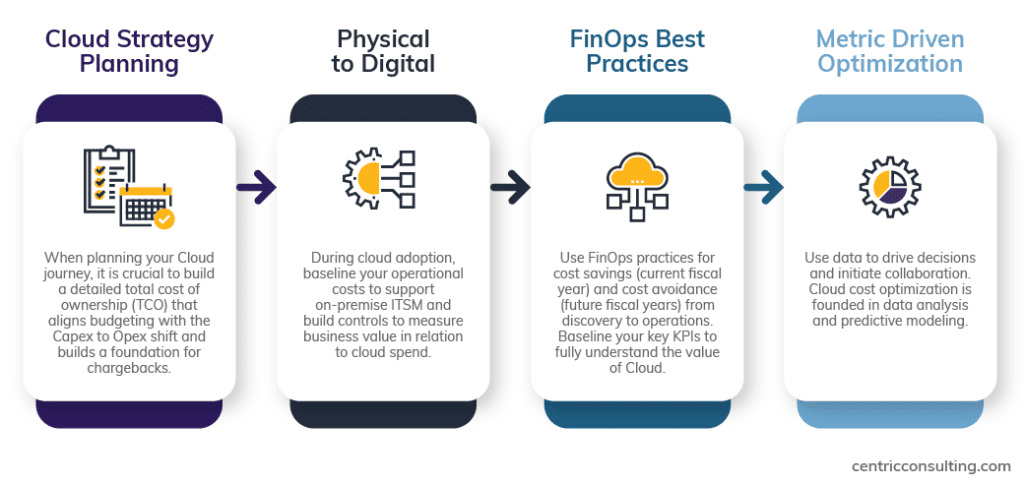Embarking on a company-wide cloud migration is an undertaking for any business, but for utility companies, there are even more things to consider before making the move. To help you prepare, we outline the advantages and concerns of moving to the cloud.
Utility organizations face the challenges of an ever-evolving digital landscape and demands for reliable, efficient and sustainable energy services. New opportunities for utilities to use innovative technologies such as artificial intelligence and robotic process automation have only accelerated the demand to develop systems capable of supporting high computing and data needs.
With this, many utility companies consider options like a migration to the cloud as a means to embrace innovation, improve scalability, and provide flexibility. However, in an industry where security and performance are of the utmost importance, concerns about cloud persist.
We’ll provide a breakdown of the core benefits and potential challenges of starting your cloud migration journey, as well as recommendations for how to begin.
Top Four Benefits of Cloud Migration
Before we dive into the potential challenges and concerns associated with cloud migration, it is important to uncover some of the core benefits of a cloud migration in the utility sector.
Scalability and Reliability
Migrating to the cloud provides a great deal of scalability and reliability. By using cloud infrastructure and services, provided by organizations including Amazon Web Services (AWS) and Microsoft Azure, utility companies can dynamically adjust their computing resources to accommodate fluctuating demands (such as peak load periods), which improves operational efficiency, reduces potential down-time, and mitigates the potential cost of over-provisioning for on-premises resources.
Reliability of service is also a major benefit of cloud service options, with top providers guaranteeing high uptimes(the percentage of time the services are available) typically over 99 percent and redundancies (data storage in multiple locations in case of compromise). Cloud-based systems also allow for the remote monitoring and maintenance of critical infrastructure and utility equipment.
With these tools, utility employees can easily monitor equipment performance, detect any potential issues, and proactively predict and schedule required maintenance. This use of cloud-based technologies can result in significant cost reductions and reduce potential downtime.
Enable Innovation with Cloud Migration
Cloud platforms offer advanced data processing and storage, which allows your utility company to analyze vast volumes of data in ways that previously required substantial investments in infrastructure and staffing. This real-time data analysis allows you to provide substantial benefits to both customers and internal operations.
On the customer side, this enables highly personalized communications concerning usage trends, energy efficiency recommendations, billing forecasts, and more.
On the operations side, big data analysis can enable significant improvements to grid reliability and performance by enabling use cases such as predictive maintenance, optimized asset management, and highly accurate load forecasting.
Utilities that migrate to the cloud can, therefore, innovate more quickly without the dependency on long-term planning related to resource capacity.
Potential Cost Savings
Organizations might reduce overall operational expenses through a migration to the cloud. As part of the planning process, organizations can benefit from tools major service providers provide to estimate the cost of their resource needs. By enabling scaling, organizations are oftentimes able to secure significant cost savings by leveraging only the resources that they need based on demand.
Moreover, the cloud requires less IT personnel maintenance time overall, using innovative technologies such as serverless computing, platform as a service, solution as a service, and fully managed, highly redundant and available databases that would be prohibitively expensive to implement for utilities.
It also allows development teams to spin up environments more quickly using methods like infrastructure as code (IaC), enabling overall project-level cost savings as well. Finally, organizations may also be able to benefit from grants provided by large service providers to support their initial migration efforts.
Enhanced Security
Security is one of the most discussed topics when addressing cloud migrations. One of the largest benefits of cloud migration is that you gain the security infrastructure of large service providers, with massive investment in providing secure services.
Moreover, cloud-based solutions offer security solutions including advanced encryption, access control mechanisms to protect sensitive data, robust disaster recovery capabilities, and business continuity capabilities that ensure rapid data restoration and system resilience in the case of major disruption events.
Cloud Concerns and Potential Solutions
Cloud migrations are not without their challenges. We have highlighted a few of the top concerns and challenges associated with the cloud migration process, with a focus on challenges unique to the utility industry, as well as some tips on how to mitigate these apprehensions.
Security Concerns
We presented security as a cloud migration benefit, but it is also an area of major concern. The largest issue typically raised is that utility data now rests in the partial hands of a third party. Cloud providers, however, have invested significant resources to ensure that their applications meet the very highest levels of security compliance.
Most utility companies do not have the resource capabilities to have a large security organization. By using cloud solutions, you get the added benefit of this team of specialists constantly working to maintain the integrity of the solution.
Utilities themselves must also take an approach that ensures the security of their cloud solution- both from a proactive and reactive perspective. You need to put proactive measures in place to ensure critical security components such as proper identity and access management, data encryption, and so on. You must also support reactive measures for the detection and prevention of unauthorized use, intrusions, data leaks and more.
To ensure proper implementation of these measures both in set-up and ongoing support, we encourage the engagement of a specialized third-party auditing service. It is also important to consider in contracting the amount of liability for security your cloud provider will provide and if that meets your organizational needs.
Compliance Concerns
As a highly regulated industry, compliance concerns naturally become part of any conversation related to cloud migrations, as a utility must ensure its solution meets industry-specific requirements related to cybersecurity and data privacy. Moreover, there is the natural concern that the use of a third party, in this case, your cloud service provider, may reduce the amount of control you have over your infrastructure and performance data.
However, most cloud partners provide robust reporting tools to their customers, with users having the ability to customize reports to meet their organizational compliance needs.
You can also mitigate compliance concerns by ensuring your selected service provider meets your specific compliance requirements, such as only using data centers located in your country, and ensuring they meet federal guidelines, such as those established by the Federal Risk and Authorization Management Program (FedRAMP), and meeting standard security framework requirements such as those established by NIST, SOC 2, ISO 27001, and CSA CCM.
Cloud Migration Change Management and Adoption
A cloud migration project requires the organization to be ready to execute on a large-scale change to your IT operations. Successful implementations approach cloud migration as a fundamental shift in your operating model.
Less successful projects approach cloud migration in silos, with multiple instances established across the organization, potentially on multiple platforms, which can result in an inefficient, costly disparate approach to the cloud. It is critical to establish a roadmap that considers the full vision for the migration process across the organization.
Budgets
While there are likely cost savings associated with cloud migrations, there are two primary challenges this approach presents for utility companies.
First, there is less direct control over budget, as it is based on usage and can fluctuate.
Without an effective cloud management process in place, it is quite easy to overspend on excess infrastructure, services, applications and user licenses. To mitigate potential overspend, organizations can benefit from working with an organization that specializes in Cloud FinOps, which is designed to help organizations focus on cloud cost optimization from discovery through operations, empowering teams to make cloud business decisions around speed, cost and quality. We can break down cloud transformation into the following areas of optimization.
Second, for utilities, the capital expense (CapEx) and operational expense (OpEx) accounting designations are an important consideration when evaluating approaches.
There are traditional financial benefits of upfront infrastructure buildouts, as well as owning depreciating on-premises equipment under current regulations as they would be classified as CapEx. Regulatory and accounting guidelines may not update to reflect parity in the treatment of the cost model associated with cloud migrations.
However, utilities can find existing ways to minimize the negative financial ramifications of a cloud migration. There are clauses to allow for the capitalization of designated cloud-related costs – such as capitalizing dedicated leased assets from the service provider, ensuring that you have sole-tenant access, and self-hosting, where you use cloud services to manage your cloud environment independently (rather than a managed hosting service).
A utility company can explore many considerations in these approaches. Working with a consultant well-versed in both cloud industry solutions, as well as industry-specific considerations, is an important part of ensuring you maximize your cloud cost strategy.
What’s Next
With these challenges, it is not a surprise that cloud migrations have mixed results and potentially limited adoptions. In a survey done by IT provider Unisys, in their Cloud Success Barometer Report, one-third of organizations have seen little to no improvement or only slight improvement to their organizational effectiveness as a result of cloud migration. However alarming that statistic, the other side is that 66 percent of organizations found that their organization either greatly or moderately changed for the better as a result of a cloud migration effort.
How can you ensure that your organization is part of that majority? It all comes down to an effective initial planning process, ensuring proper implementation, and ongoing support and maintenance. Success is also dependent upon establishing reasonable key performance indicators and expectations, as well as ensuring that you are able to effectively capitalize on the benefits of the migration.


